Kylemore Abbey: The Enduring Story of A Fairytale Legacy
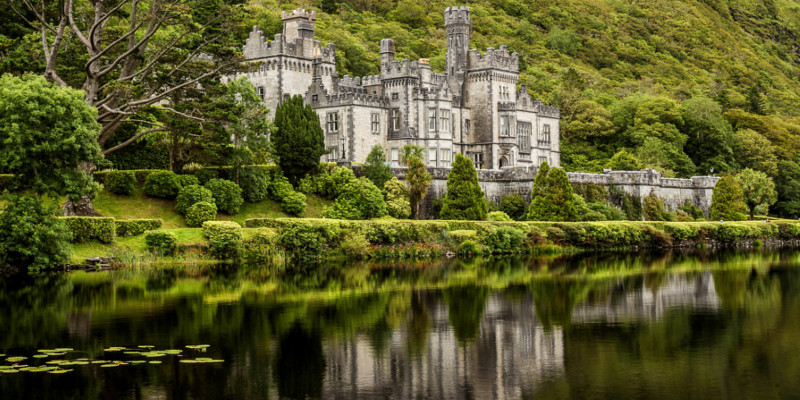
In the year 1871, a grand vision took shape on the shores of a picturesque lake in County Galway, Ireland. Mitchell Henry, a wealthy financier and Member of Parliament, stood proudly with his wife, gazing upon their magnificent creation – Kylemore Castle, a fairytale-like masterpiece that would capture the hearts of all who beheld it.
Sixteen years prior, the Henrys’ dream began to take root during their enchanting honeymoon at this very spot. Renting Kylemore Lodge, they fell in love with the captivating beauty of the landscape, setting the stage for their future aspirations.
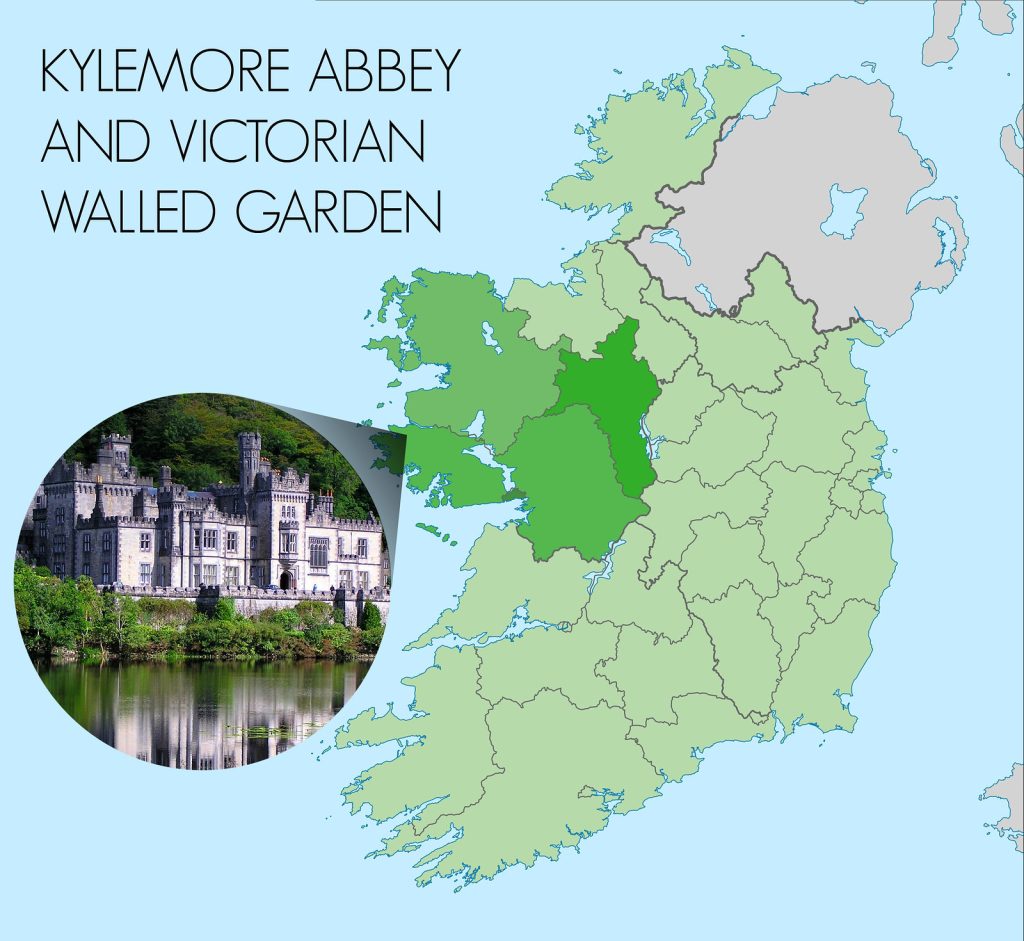
Kylemore Abbey in County Galway on the beautiful west coast of Ireland
With a sizable inheritance from Mitchell’s father, a wealthy cotton merchant, no expense was spared in bringing their dream to life. The castle, an architectural marvel, sprawled across 40,000 square feet, boasting seventy rooms crafted from granite and limestone, a testament to the craftsmanship of 100 skilled laborers who toiled for four years to realize this grand vision. The project came with a hefty price tag of £18,000, equivalent to roughly $3 million in today’s currency.
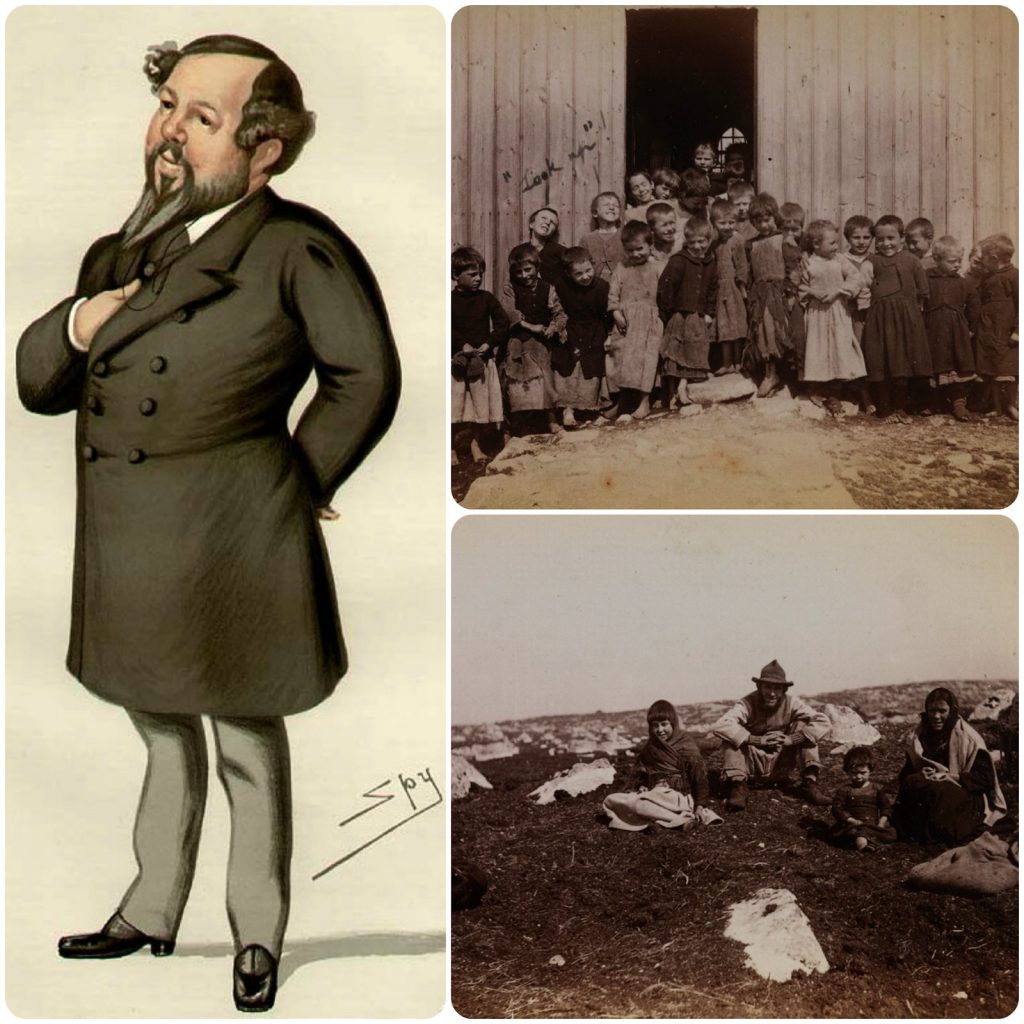
However, Mitchell Henry’s ambitions extended beyond his castle. Relinquishing his medical career to manage the family business, he also ventured into politics as the Member of Parliament for Galway County. With Ireland still recovering from the devastating Great Irish Famine, Henry sought to uplift the local community by providing employment, shelter, and education. He transformed thousands of acres of marshland into the productive Kylemore Estate, bestowing social and material benefits upon the entire region.
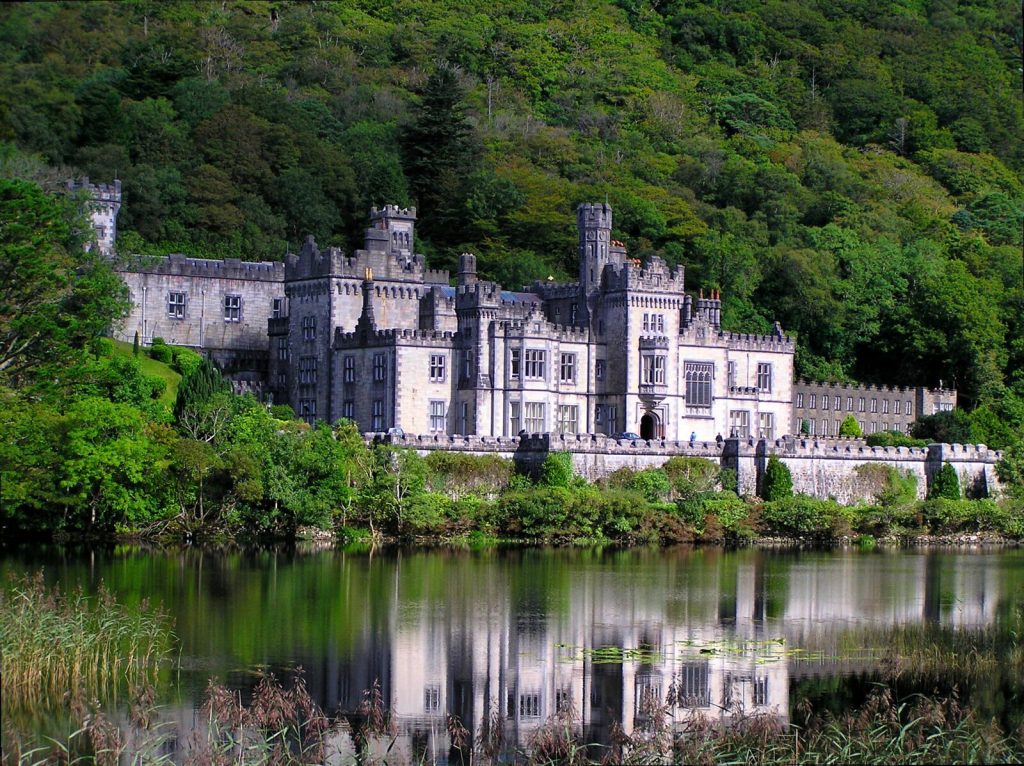
Kylemore Abbet. Credit Hans-Peter Eckhardt
Within the estate lay the splendid Victorian Walled Gardens, a horticultural marvel featuring 21 heated glasshouses and a 60-foot banana house that nurtured a wide array of exotic fruits and vegetables.
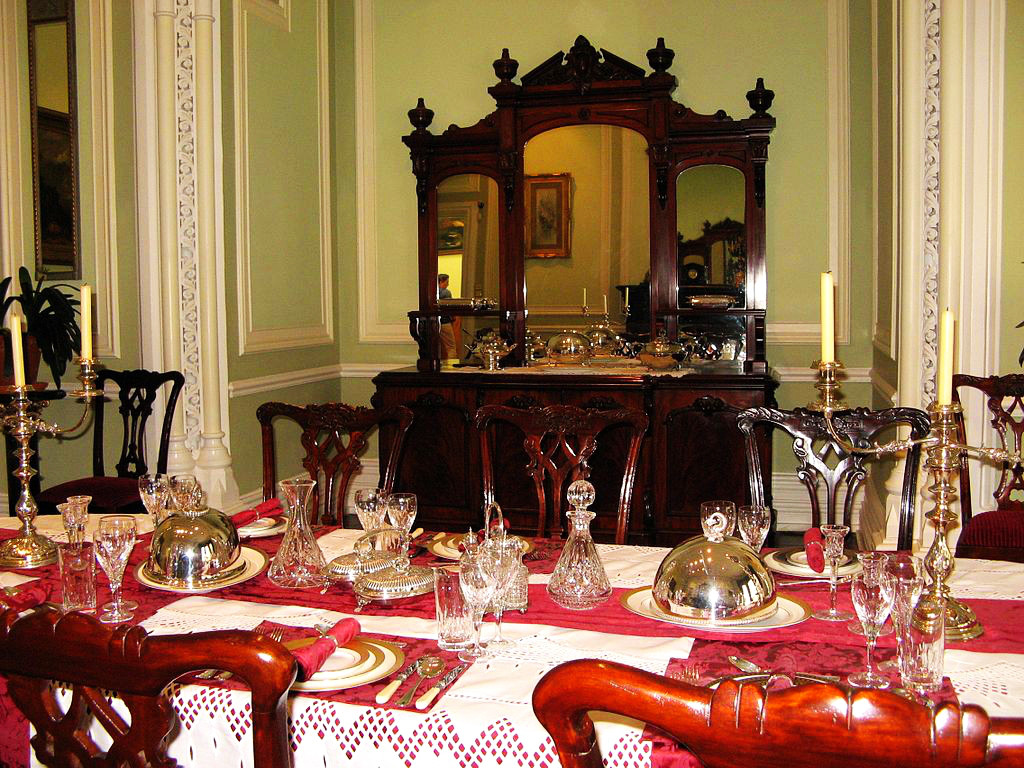
Kylemore Abbey interior. Credit Textman
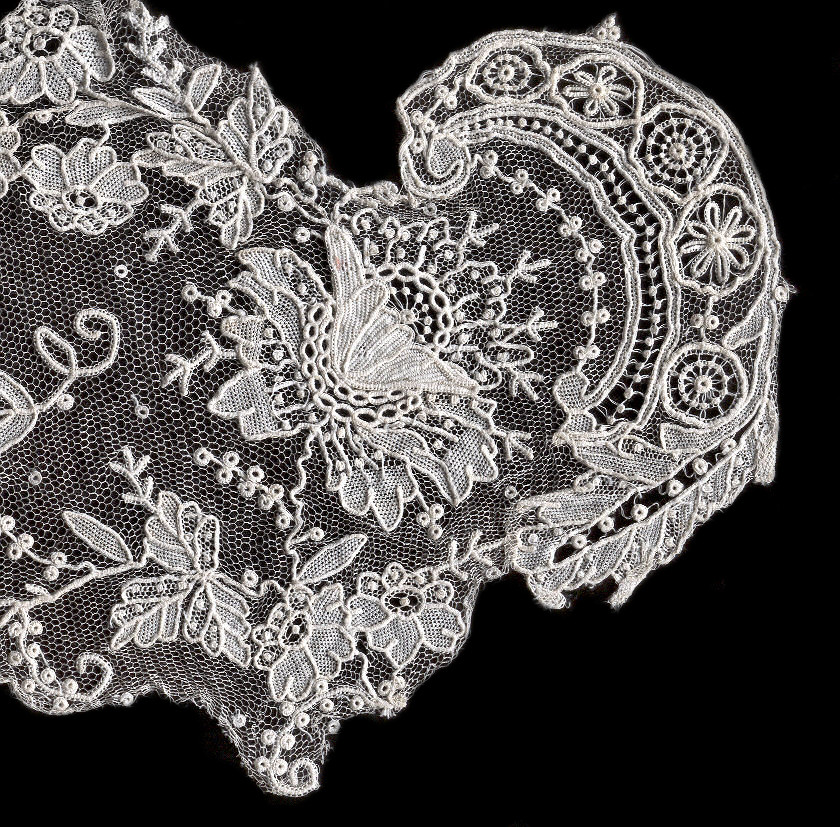
Valenciennes Lace. Credit Carolus
Tragedy struck only four years after Kylemore Castle’s completion when Mitchell’s beloved wife, Margaret, passed away suddenly from a fever contracted during a journey to Egypt. Grief-stricken, he erected a beautiful memorial church on the lakeshore, about a mile from the castle. This neo-Gothic masterpiece, crafted from Caen sandstone with internal columns of green Connemara marble, served as a scaled-down replica of Bristol Cathedral. Here, Margaret found her final resting place, and eventually, Mitchell would join her.

Kylemore Abbey neo-Gothic church. Credit High Contrast
The tale took an unexpected turn when Mitchell Henry sold Kylemore to William Angus Drogo Montague, 9th Duke of Manchester, in 1903. The Duke, infamous for his excessive spending and gambling, sought refuge from mounting debts and eloped with Helena Zimmerman, an American heiress. The couple found solace in the castle on the Irish lake, adding another chapter to Kylemore’s saga.
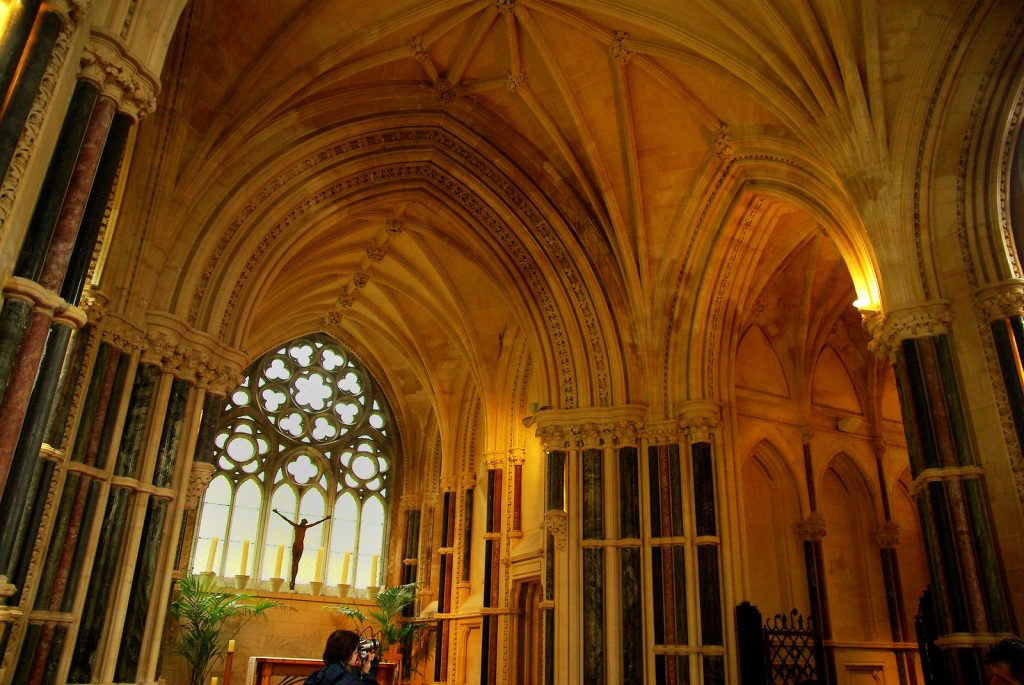
Neo-gothic church at Kylemore

Chateau Wood Ypres, 1917
A pivotal moment in the property’s story came in 1920 when the Benedictine nuns, fleeing war-torn Ypres, settled into Kylemore Castle and transformed it into the magnificent Kylemore Abbey. Restoring the Victorian gardens and neo-Gothic church became major endeavors, fueled by generous donations and the dedicated work of local artisans.
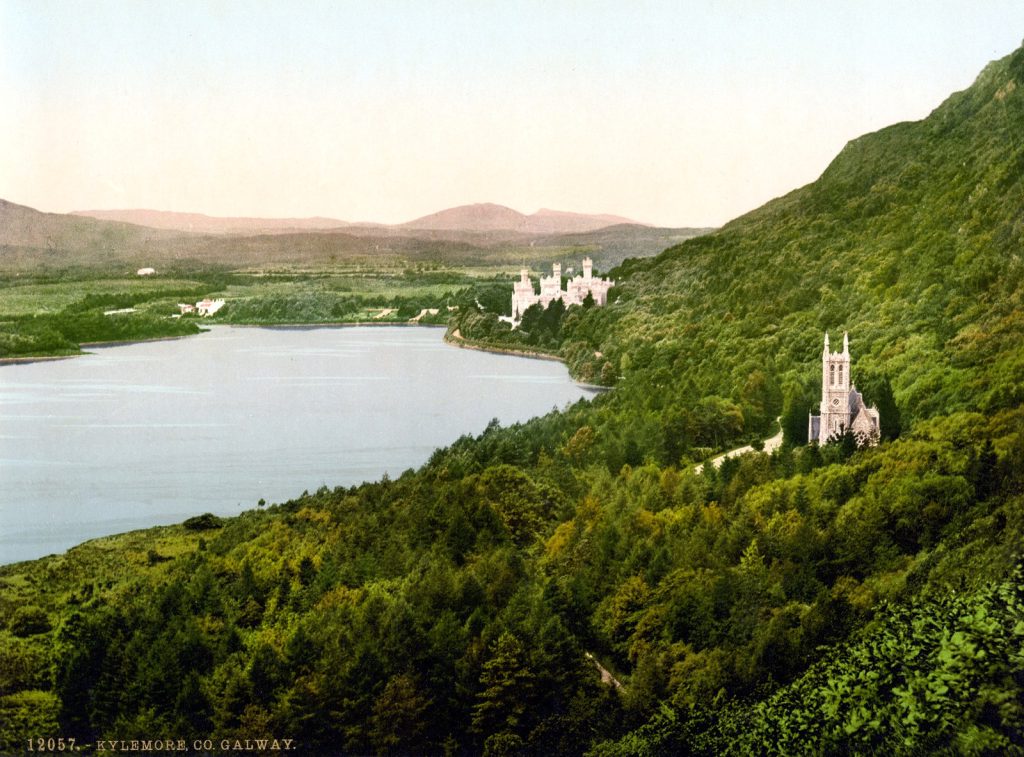
Kylemore in 1895
Today, Kylemore Abbey stands as a thriving, self-sustaining monastery, welcoming visitors to explore its remarkable history and tranquil Victorian gardens. The legacy of Mitchell and Margaret Henry endures in the capable hands of those who safeguard their dream castle, ensuring that this fairytale-like wonder remains a cherished part of Ireland’s cultural heritage.
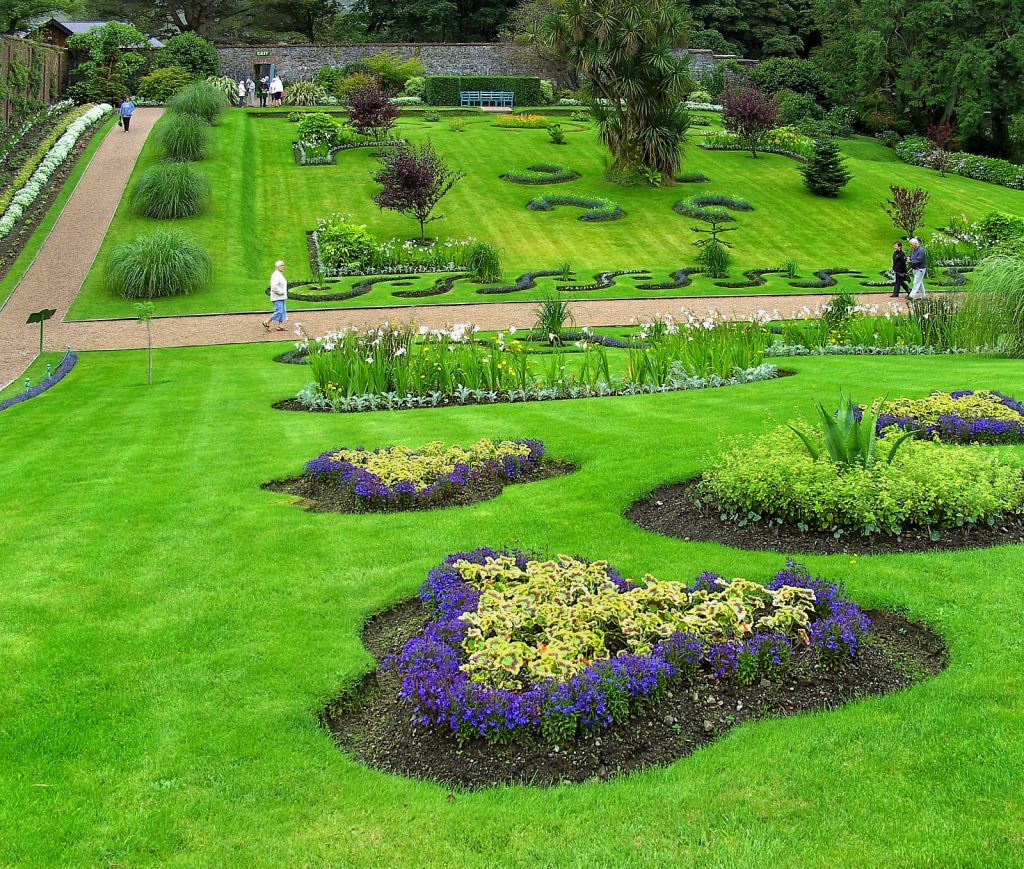
Kylemore Abbey garden. Credit High Contrast
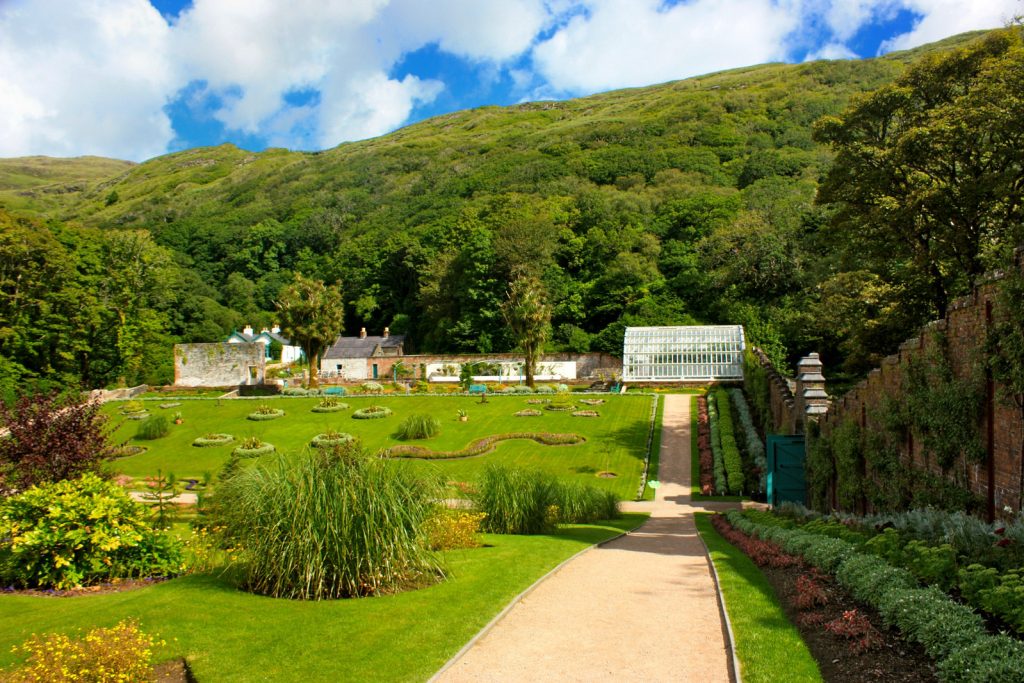
Walled Victorian Gardens. Credit Dolly442